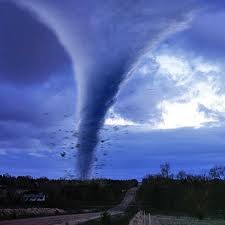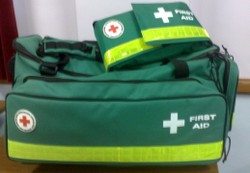Welcome, aboard and congratulations on making the difficult decision, you have decided it is time to take the first steps to developing your own family disaster plan. It is not that hard once you put your mind to the task. After all love and concern for family, trumps procrastination right. Please continue reading as family-minded people like you and me. Review the steps required to developing a family disaster plan. As I said, it is easy once we put our mind to the task.

7 Steps to Developing a Family Disaster Plan
by teddletonmr
Developing a family disaster plan is easy once we put our mind to it and follow these 7 steps…
 |
1. Develop a family disaster plan.
The first thing on our emergency plan list, make sure all family members know and understand how to stay safe in case of an emergency.
Discuss and develop a plan for what each of your family members will need to do in case of an emergency or natural disaster. For instance, where they will need to go when an evacuation is necessary, where the nearest shelter is located, it may be a local church, hotel, relative’s home, or neighbor.
Make sure to remember to include in your disaster plan all the family pets. Many shelters, hotels, friend’s home, or family will not allow pets, or be able to provide everything your pets need. So do everyone a huge favor, make sure your e prep plan includes provisions for the family cat, dog, turtle, rabbit or any other critters that depend on you.
We absolutely must know, rehearse and review a home evacuation plan regularly. Look at it the same way as you do the batteries in your home's smoke, and carbon monoxide detectors. Ok, sometimes we forget about checking them in our home. Failing to keep them fresh and up-to-date, you do understand is a bad habit we need to break. Subsequently, practicing our home evacuation plan will help us know exactly what to do in an emergency, and stay as prepared as possible. Now is the time to get into the habit, the life you save will most likely be that of someone you love.
Develop a family communication plan. Identify a relative or family friend in another city, or state to serve as the contact person all members of the family know to contact in the event family members find themselves separated in an emergency.
Your family’s contact list should include. Names, both land and cell phone numbers, mailing, email, and physical addresses, and remember to denote their relationship, in-laws, aunt or uncle.
It is important to remember, in many cases when a natural disaster or severe weather situation strikes. Telephone landlines and cell phones will be out of service for hours, days or even weeks at a time. So just, be prepared for the reality of the emergency.
Disaster Kit Supplies
 |
2. List of disaster supplies
Store your disaster kit in a portable container and be prepared for an evacuation.
At least 3 days of emergency food and bottled water for each person, family member and let us not forget about our pets.
Include a manual can opener, infant formulas, pet food, canned milk and many other canned foods are great survival food choices in emergencies.
Battery operated weather radio and flashlight.
First aid kit including at least three days’ worth of both family and pet medications.
Personal hygiene products, and care products.
Emergency contact information, names, landline and cell phone numbers and addresses.
Pet supplies especially for service animals, leads, bedding and a portable kennel for shelter and moral support.
Copies of important papers such as, home and auto insurance policies, deed or mortgage, bank account information and water and light bills that will serve to verify you live where you say you do when someone asks you, and someone will ask. In the aftermath of a natural disaster, residential areas will be off limits to curious sightseers. Where only people that live in the neighborhood can pass the checkpoints and survey the damages to their home and property’s.
Cash is always best, emergency cash or credit card in the event you must evacuate. Cash is always best when no communication systems are working required to process credit or debit card transactions.
Take care to ensure your plan includes things anyone with special needs will require. Such as, walkers, walking stick or blind person’s cane, wheelchair, oxygen generator, breathing machine or cooler for at least 3 days’ worth of diabetic and other necessary medications and personal hygiene items.
 |
3. Listen to the radio
Listen to the radio for important public service announcements that will contain information about what you should do, and where to go for help during an emergency. Remember, it is important to remain calm during an actual emergency. Having all the information, available to you will go a long way to help keep everyone calm and focused.
Local city, county and state agencies have disaster plans in place to deal with flooding, earthquakes, tornadoes, hurricane and all other natural disasters or emergencies in the area. Educate yourself and your family as to what the local emergency preparation plan is, keep informed and stick to the plan.
Portable Weather Radio
 |
| La Crosse 810-805 NOAA/AM/FM Weather RED Alert Super Spor... |
 |
| DreamSky Portable AM FM WB NOAA Weather Radio Alarm Clock... Only $13.99 |
 |
4. Know and understand the risk
 Know the risks associated with earthquakes, tornadoes, hurricanes, blizzards, ice storms, flash flooding other severe weather events, or the lack of a disaster preparedness plan.
Know the risks associated with earthquakes, tornadoes, hurricanes, blizzards, ice storms, flash flooding other severe weather events, or the lack of a disaster preparedness plan.
Much too often people fail to understand the difference between a watch, and warning. Take for instance when a flood watch is issued, versus a flood warning. A warning means there is a clear and present danger, creeks, ditches, and rivers are actually are out of their banks flooding low lying areas.
Where as a watch simply means, weather conditions make it possible flooding might occur. Likewise, a tornado, winter storm, freezing rain, thunderstorm or one of the many other natural disasters warnings and watches give us time to implement the appropriate emergency preparedness plan.
 |
5. Steps to mitigate and prevent
Simple steps you should consider that would reduce potential property damage and catastrophic property loss.
Look into purchasing flood, earthquake, tornado, tsunami insurance and review your insurance coverage with your home insurance agent. Increase coverage amounts to cover the replacement cost of your home's structure, systems, furnishings, and do not forget all your family members’ personnel collectibles and other content. We tend to forget about until it is too late to do anything about it other than cry and mourn the loss.
 |
6. Inventory and make list
Put together a complete inventory list, creating a photo album of the all exterior views and interior high lighting specific features of your home, fence, storage shed and all contents, landscape beds and plantings, lawn and patio furnishings including all the kids outdoor toys including such things as trampoline, swing-set and swimming pool and accessories. Remember, to inventory all contents that have monetary and sentimental value. Pay special attention to the furniture in each room, kitchen, dining, living, bedrooms including any games, systems and additional components.
 |
7. Review and make necessary changes
Review your family disaster plan regularly. Every 6-month is a good place to start. On the other hand, there are reasons to change certain aspects of your family disaster plan more frequently, for instance, when moving, new health conditions or a son or daughter going off to college, join the military etc.
Conclusion
Developing your family disaster plan is only the first step, we now must implement, review often and adjust when and where things change.
Stay safe and be prepared. Mike
Mike's tips and reviews
You might also like
First Aid: Would you Know What to Do?A medical emergency could happen at any moment. The question is whether you h...
Would You Recognize the Symptoms of Hypothermia in Time to Sav...If you've ever dithered, teeth chattering with the cold, you've been in the o...














 Apple Watch the Best Talking Watch Bargainon 01/16/2023
Apple Watch the Best Talking Watch Bargainon 01/16/2023
 In-depth review of a Bushcraft Backpacking Survival hatcheton 12/05/2014
In-depth review of a Bushcraft Backpacking Survival hatcheton 12/05/2014
 Winterizing windows – Easy and inexpensive DIY projecton 11/17/2014
Winterizing windows – Easy and inexpensive DIY projecton 11/17/2014
 Growing cucumbers on a trellis is fun and easyon 08/05/2014
Growing cucumbers on a trellis is fun and easyon 08/05/2014


Comments
WOW What a great list of tips and kits, I had no idea you could buy such extensive bags of stuff like that. You never know when you just might need such things. Thanks for the useful information. We get some very serious winds where I live and I can easily imagine being without water and electricity. Been there done that.
Katie